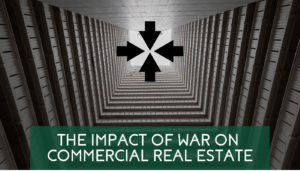5 Keys to Successfully Sharing Your Story with Real Estate Investors
By Adam Gower Ph.D.

“Always remember that our conscious mind is simply the PR department for our subconscious mind, where all the real decisions are being made.” – Robert Mckee
How do we convince investors to get on board with a new real estate investment project, especially through a newer approach like crowdfunding? The key to nurturing investors is to make sure we’re telling them a story with our data, not just presenting a collection of numbers, graphs, and charts.
Follow the ABTs of storytelling and you’ll see investors responding more positively to the messages you’re conveying.
ABT: And, But, and Therefore
Stories are a simple narrative tool to convey a message. You can use them in videos, blog posts, board rooms, social media, or anywhere else you’re communicating. Communication with a prospect or an active investor should be about educating them about your value proposition through the lens of your experience and knowledge, then using data and logical evidence to back it all up.
You’re not making things up or starting every meeting with “once upon a time”.
Instead, you’re leading off with emotional appeal – like, ‘here’s what we are projected the returns are going to be and here’s an amazing photograph of the building’ – and then following through with more detailed data, facts, and figures. We tend to try to lead off with our data, skipping the emotional appeal altogether, which is less compelling because it’s data alone doesn’t build trust.
Even if you present all the most compelling evidence, you still need something to tie it all together and demonstrate how it all plays to your strengths. . (????).
Get access to our FREE weekly newsletter exclusively covering the latest updates from the real estate crowdfunding world
You need to use a story to weave the disparate components of your pitch together to inspire investors to trust that you’re the best company, or the best project sponsor, for them to invest with. They’re not going to just look at the facts and figures; they also want to look you in the eyes and hear what makes you trustworthy and explaining the story behind the deal is the best way to do that.
So, why lead off with “left brain” focused logic, statistics, figures, and data? Bring those in when it’s appropriate but start off with something that will captivate your audience’s subconscious first.
Primary Elements of a Story
With any story you’re telling investors, your goal is to paint a picture for them and lead them to a certain conclusion about the information you’re trying to convey.
Stories should have specific pieces of information that the listener can latch onto and relate to themselves. Your purpose with a story is to let the investor try on your shoes and walk around in a situation you’ve experienced. They need to understand how it was at that time, feel the difficulties, and come around to see the solutions or the lessons for themselves.
You help them through that process by giving them 5 separate primary elements to connect with. These should be specific, not general. The 5 elements are:
1) Timestamp
Tell them when the story takes place. Even if it happened recently, it’s good to frame a story first with the knowledge of when it took place. This specific knowledge helps it make it more believable and gives the listener an inclination of what you were doing at that point and how you thought back then.
2) Location
Similar to the timestamp, a location gives a story depth and context. Whether you’re talking about a specific city, a bank, a type of room, etc., give them some sort of location to help paint the mental picture. A little bit of detail goes a long way here.

3) Character
Who is the story about? Is it your own personal story or are you talking about someone else? Let the listener know who the main character of this story is.
People live vicariously through the character of the story, so they need to know whose story it actually is.
4) Action
Stories must have some sort of action going on. This is an essential part of a narrative, because the character needs to do something in order for it to be a story The action of a story doesn’t need to be intense, wild, exciting, or otherwise, but it needs to meaningful in some way and lead to the conclusion at the end. It has to make sense or the listener won’t follow.

5) Surprise
What did all your details and your story action lead up to? The surprise of a story is at the conclusion of events. It can be a lesson learned through an experience, an opportunity discovered, or anything else at all.
Mixing Real Estate Investment with Storytelling
From the onset, it probably feels like you don’t have any stories that people would care about, especially not investors looking for real estate projects. You shouldn’t start out by saying you’re going to tell a story, but you can lead into a story that has any sort of relevance or connection. People care about the little things that you wouldn’t necessarily think matter.
Whether you’re telling a company story or a personal story, the authenticity and transparency of telling a story will draw your audience in. Weaving your data throughout the narrative makes it believable. Giving your audience a logical conclusion makes it convincing.
***
Stories are like trojan horses. The narrative itself is what gets you through the gates, but you do need the facts, data, and supporting evidence to do the work once you’re in. To reach your investors and form a connection, you need an effective story that provides context to your data.
Get in touch with the subconscious decision-making center before appeasing the conscious mind with the numbers. Remember: Numbers aren’t relatable, but you are.
If you have only just started in real estate development, have completed no deals, have no email list, but know you want the freedom and wealth being a real estate developer brings, then I suggest your first step is to start evaluating deals so you can recognize a good one when you see it.
Here’s where you should start. You’ll learn everything you need to know – the different types of real estate, different development strategies, how real estate cycles influence the market, and all about due diligence.
If you want to find deals and raise money for them so you can start your real estate development business, then learning how to conduct due diligence so you can pitch your deals better to investors is a great place to start.
If you’ve already purchased one or more real estate project and are seeing more opportunities than you can finance, then now is the time to start building your investor network so you can finance all your next deals quicker.
You’ve already got some momentum; now start finding and educating prospects about what you’re doing so you can build an email list of people to pitch to when you’re ready to raise money for your next deal.
This is what we build for private clients all the time – it’s called the Investor Acquisition System and you can access the entire program right here so you can find prospects, and convert them into being deep pocketed, repeat investors in your deals.
If you are a seasoned pro with multi-cycle experience, a substantial portfolio, a decent deal pipeline, and find yourself spending too much time raising equity capital because you’re still doing it in-person, then it’s time you put technology to work for you.
The wonderful thing about doing this is that you’re not going to be doing anything different than you’re already doing and, guess what, you’ll never have to sit through investor meetings again.
Sounds crazy I know, but I lay the whole thing out for you in this white board workshop where I personally show you exactly what it takes for you to transform your equity raising into a fully automated, capital raising machine so you can find new investors while increasing commitments from your existing network.






